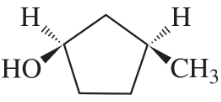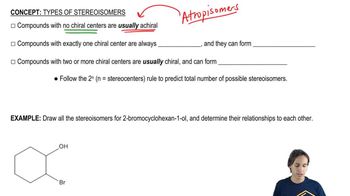Which of the following pairs of compounds could be separated by recrystallization or distillation?
a. meso-tartaric acid and (±)-tartaric acid (HOOC—CHOH—CHOH—COOH)


 Verified step by step guidance
Verified step by step guidance Verified video answer for a similar problem:
Verified video answer for a similar problem:



 3:51m
3:51mMaster Determining when molecules are different. with a bite sized video explanation from Johnny
Start learning